I have been doing considerable investigation of UICollectionView performance. The conclusion is simple. Performance for a large number of cells is poor.
EDIT: Apologies, just re-read your post, the number of cells you have should be OK (see the rest of my comment), so cell complexity may also be a problem.
If your design supports it check:
Each cell is opaque.
Cell content clips to bounds.
Cell coordinate positions do not contain fractional values (e.g. always calculate to be whole pixels)
Try to avoid overlapping cells.
Try to avoid drop shadows.
The reason for this is actually quite simple. Many people don't understand this, but it is worth understanding: UIScrollViews do not employ Core Animation to scroll. My naive belief was that they involved some secret scrolling animation "sauce" and simply requested occasional updates from delegates every now and then to check status. But in fact scroll views are objects which don't directly apply any drawing behaviour at all. All they really are is a class which applies a mathematical function abstracting the coordinate placement of the UIViews they contain, so the Views coordinates are treated as relative to an abstract contentView plane rather than relative to the origin of the containing view. A scroll view will update the position of the abstract scrolling plane in accord with user input (e.g. swiping) and of course there is a physics algorithm as well which gives "momentumn" to the translated coordinate positions.
Now if you were to produce your own collection view layout object, in theory, you could produce one which 100% reverses the mathematical translation applied by the underlying scrollview. This would be interesting but useless, because it would then appear that the cells are not moving at all as you swipe. But I raise this possibility because it illustrates that the collection view layout object working with the collection view object itself does a very similar operation to the underlying scrollview. E.g. it simply provides an opportunity to apply an additional mathematical frame by frame translation of the attributes of the views to be displayed, and in the main this will be a translation simply of position attributes.
It is only when new cells are inserted or deleted moved or reloaded that CoreAnimation is involved at all; most usually by calling:
- (void)performBatchUpdates:(void (^)(void))updates
completion:(void (^)(BOOL finished))completion
UICollectionView requests cell layoutAttributes for each frame of scrolling and each visible view is laid out for each frame. UIView's are rich objects optimised for flexibility more than performance. Every time one is laid out, there are a number of tests the system does to check it's alpha, zIndex, subViews, clipping attributes etc. The list is long. These checks and any resulting changes to the view are being conducted for each collection view item for each frame.
To ensure good performance all frame by frame operations need to be completed within 17ms. [With the number of cells you have, that is simply not going to happen] bracketed this clause because I have re-read your post and I realise I had misread it. With the number of cells you have, there should not be a performance problem. I have personally found with a simplified test with vanilla cells, containing only a single cached image, the limit tested on an iPad 3 is about 784 onscreen cells before performance starts to drop below 50fps.
In practice you will need to keep it less than this.
Personally I'm using my own custom layout object and need higher performance than UICollectionView provides. Unfortunately I didn't run the simple test above until some way down the development path and I realised there are performance problems. I'm so I'm going to be reworking the open source back-port of UICollectionView, PSTCollectionView. I think there is a workaround that can be implemented so, just for general scrolling about, each cell item's layer is written using an operation which circumvents the layout of each UIView cell. This will work for me since I have my own layout object, and I know when layout is required and I have a neat trick that will allow the PSTCollectionView to fall back to its normal mode of operation at this time. I've checked the call sequence and it doesn't appear to be too complex, nor does it appear at all unfeasible. But for sure it is non-trivial and some further tests have to be done before I can confirm it will work.



